115 events in 2020
-
Seminar
Holography from field theories: a realization of AdS/CFT correspondence and beyond
March 18 (Wed) at 13:30 - 14:30, 2020
Sinya Aoki (Professor, Yukawa Institute for Theoretical Physics, Kyoto University)
*Seminar room changed from 160 to 433. We argue that the Anti-de-Sitter (AdS) geometry in d+1 dimensions naturally emerges from an arbitrary conformal field theory in d dimensions using the free flow equation. We first show that an induced metric defined from the flowed field generally corresponds to the quantum information metric, called the Bures or Helstrom metric, if the flowed field is normalized appropriately. We next verify that the induced metric computed explicitly with the free flow equation always becomes the AdS metric when the theory is conformal. We also show that the conformal symmetry in d dimensions converts to the AdS isometry in d+1 dimensions after d dimensional quantum averaging. This guarantees the emergence of AdS geometry without explicit calculation. We next apply this method to non-relativistic systems with anisotropic scaling symmetries, such as Lifshitz field theories and Schr\”odinger invariant theories. In consequence we obtain a new hybrid geometry of Lifshitz and Schr\”odinger spacetimes as a general holographic geometry. We also show that the bulk hybrid geometry is realized by an Einstein-Maxwell-Higgs system plus a gauge fixing term for diffeomorphism, which may be interpreted as a holographic dual of a general non-relativistic system at the boundary.
Venue: #433, Main Research Building
Event Official Language: Japanese
-
Seminar
Index of the Wilson-Dirac operator revisited: a discrete version of Dirac operator on a finite lattice
February 25 (Tue) at 16:00 - 18:10, 2020
Mikio Furuta (Professor, The University of Tokyo)
The Wilson-Dirac operator is a discrete version of Dirac operator defined on regular lattices. When the discrete version is a fine approximation of the Dirac operator on a Z/2-graded Clifford module on a torus, it is known that (1) an integer-valued index is defined for the Wilson-Dirac operator, and (2) the index is equal to the Atiyah-Singer index of the Dirac operator on the torus. These have been well established up to around 2000. The strategy of all the previous works is to make use of the discrete version of the heat kernel for Neuberger's overlap Dirac operator. Therefore the strategy cannot be generalized to mod 2 index nor family version of index. In this talk I would like to explain a new approach to the index of Wilson-Dirac operator which can be immediately generalized to these various cases. Joint work with H. Fukaya, S. Matsuo, T. Onogi, S. Yamaguchi and M. Yamashita.
Venue: Seminar Room #160
Event Official Language: English
-
Colloquium
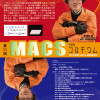
The 11st MACS Colloquium
February 19 (Wed) at 15:00 - 17:30, 2020
Hiroyuki Hata (Professor, Graduate School of Science, Kyoto University)
15:00- Teatime 15:15- Talk by Prof. Hiroyuki Hata 16:40- MACS Report Meeting FY2019 The 11th MACS colloquium is supported by iTHEMS. It will be broadcasted to Wako, but if you can join the colloquium physically in Kyoto, that would be better. iTHEMS provides good confectionery at Kyoto!
Venue: Lecture room #401, Graduate School of Science Building No 6, Kyoto University
Event Official Language: Japanese
-
Seminar
Mining for Dark Matter substructure: Learning from lenses without a likelihood
February 17 (Mon) at 14:00 - 15:30, 2020
Johann Brehmer (Postdoctoral Researcher, New York University, USA)
Dr. Brehmer gives us a talk about a method to deduce DM small structures. Please join us! The subtle imprint of dark matter substructure on extended arcs in strong lensing systems contains a wealth of information about the small-scale distribution of dark matter and, consequently, about the underlying particle physics. However, teasing out this effect is challenging since the likelihood function for realistic simulations of population-level parameters is intractable. Structurally similar problems appear in many other scientific fields ranging from particle physics to neuroscience to epidemiology, which has prompted the development of powerful simulation-based inference techniques based on machine learning. We give a broad overview over these methods, and then apply them to the problem of substructure inference in galaxy-galaxy strong lenses. In this proof-of-principle application to simulated data, we show that these methods can provide an efficient and principled way to simultaneously analyze an ensemble of strong lenses, and can be used to mine the large sample of lensing images deliverable by near-future surveys for signatures of dark matter substructure.
Venue: #424-426, Main Research Building
Event Official Language: English
-
Seminar

Solved and open problems regarding the neighborhood grid data structure
February 7 (Fri) at 16:00 - 18:10, 2020
Martin Skrodzki (Visiting Scientist, RIKEN Interdisciplinary Theoretical and Mathematical Sciences Program (iTHEMS) / Fellow, German Academic Scholarship Foundation, Germany)
February 7 at 16:00-17:00 17:10-18:10, 2020 In 2009, Joselli et al. introduced the neighborhood grid data structure for fast computation of neighborhood estimates for point clouds in arbitrary dimensions. Even though the data structure has been used in several applications and was shown to be practically relevant, it is theoretically not yet well understood even in the two-dimensional case. The purpose of this talk is to present the data structure, give a time-optimal building algorithm, and motivate several associated questions from enumerative combinatorics as well as low-dimensional (probabilistic) geometry. In case of questions that have been solved in the past, corresponding proofs will be provided. For the open question, the talk will list them as an outlook to possible future collaboration.
Venue: Seminar Room #160
Event Official Language: English
-
Seminar
Biology Talk
February 5 (Wed) at 16:00 - 16:30, 2020
Yasuo Yasui (Assistant Professor, Laboratory of Crop Evolution, Kyoto University)
Dr. Yasuo Yasui will give a 20-30 min introduction of the buckwheat project. Please feel free to join !
Venue: Seminar Room #160
Event Official Language: Japanese
-
Seminar
ABBL/iTHEMS seminar - talk on ultra-high energy cosmic rays
January 31 (Fri) at 14:00 - 15:00, 2020
Eiji Kido (Astrophysical Big Bang Laboratory, RIKEN Cluster for Pioneering Research (CPR))
Venue: Seminar Room #132
Event Official Language: English
-
Seminar
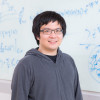
Nucleon Structure from Quantum Chromodynamics
January 30 (Thu) at 11:00 - 12:00, 2020
Jason Chang (Research Scientist, RIKEN Interdisciplinary Theoretical and Mathematical Sciences Program (iTHEMS) / LBNL/UCB, USA)
Talk of this seminar is a colloquium style, so that non-expert can enjoy. Please feel free to join. The origin of matter is one of the longest standing mysteries that have captured the human imagination. The modern description of particle and nuclear physics hypothesizes that our matter filled universe must have resulted in the underlying physical processes favoring the preservation of matter over antimatter during the initial formation of our universe. This mechanism is attributed to the fundamental breaking of particle and antiparticle symmetry in physics beyond the Standard Model. One source of asymmetry is hypothesized to reside in the neutrino sector, and intense international efforts are being pursued to observe this phenomena in neutrino scattering experiments. Precise interpretation of experimental observations benefits from a Standard Model prediction of how nuclear matter interacts with neutrinos. The modern theory governing matter and their properties is the theory of the strong interaction, quantum chromodynamics (QCD). In this talk I will discuss a QCD calculation of the nucleon form factor at zero momentum transfer, which is related to how a neutrino at rest interacts with a single proton or neutron, followed by current progress on the calculation of the proton radius which is related to the slope of the form factor. Together the calculations paves a novel way forward towards a precise determination of the nucleon form factor up to momentum transfer relevant for neutrino scattering. I will end the talk by discussing future milestones and challenges as we work towards calculations for nuclear physics starting from QCD.
Venue: #433, Main Research Building
Event Official Language: English
-
Workshop
Workshop on quantum information science
January 29 (Wed) at 10:00 - 18:00, 2020
Venue: Suzuki Umetaro Hall
Event Official Language: Japanese
-
Workshop
CREST Tutorial Workshop
January 26 (Sun) - 28 (Tue), 2020
This workshop is co-organized by CREST Research Project "[Topology] Creation of Core Technology based on the Topological Materials Science for Innovative Devices" and RIKEN iTHEMS.
Venue: Graduate School of Mathematical Sciences, The University of Tokyo
Event Official Language: Japanese
-
Seminar
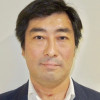
ABBL/iTHEMS seminar - talk on neutron stars
January 24 (Fri) at 14:00 - 15:00, 2020
Hajime Sotani (Research Scientist, RIKEN Interdisciplinary Theoretical and Mathematical Sciences Program (iTHEMS) / Research Scientist, Astrophysical Big Bang Laboratory, RIKEN Cluster for Pioneering Research (CPR))
Venue: Seminar Room #132
Event Official Language: English
-
Seminar
Semiclassical methods in mathematical quantum mechanics
January 23 (Thu) at 16:00 - 18:10, 2020
Shu Nakamura (Professor, Gakushuin University)
Plan of the seminar: we separate each talk into two. In the first 60 minutes the speaker gives an introductory talk for non-mathematicians. After a short break, the second 60 minutes is spent for a bit more detailed talk for mathematicians (working in other areas). We welcome you joining both parts of the seminar or only the first/second half. Talk 1: Semiclassical analysis, microlocal analysis and scattering theory. I plan to talk about overview on the semiclassical analysis and related topics, especially its intrinsic relationship with microlocal analysis and (microlocal) scattering theory. Roughly speaking, the microlocal analysis is an application of semiclassical idea to the analysis of singularities, and its analogue in momentum space is the microlocal scattering theory. We discuss basic notions of these, and mention several recent results. Talk 2: Microlocal structure of the scattering matrix with long-range perturbations. As an example of topics discussed in Talk 1, we discuss recent results on the scattering matrix with long-range perturbations. In particular, we show that the scattering matrix is expressed as a Fourier integral operator, and in some cases we can decide its spectral properties. Our approach is fairly geometric and abstract, and thus applies not only to usual Schrödinger operators but also to higher order operators and discrete Schrödinger operators.
Venue: #435-437, Main Research Building
Event Official Language: English
-
Colloquium
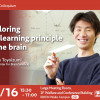
Exploring the learning principle in the brain
January 16 (Thu) at 15:30 - 17:00, 2020
Taro Toyoizumi (Team Leader, RIKEN Center for Brain Science (CBS))
Animals adapt to the environment for survival. Synaptic plasticity is considered a major mechanism underlying this process. However, the best-known form of synaptic plasticity, i.e., Hebbian plasticity that depends on pre- and post-synaptic activity, can surge coincident activity in model neurons beyond a physiological range. Our lab has explored how neural circuits learn about the environment by synaptic plasticity. The instability of Hebbian plasticity could be mitigated by a global factor that modulates its outcome. For example, TNF-alpha that mediates homeostatic synaptic scaling is released by glia, reflecting the activity level of surrounding neurons. I show that a specific interaction of Hebbian plasticity with this global factor accounts for the time course of adaptation to the altered environment (Toyoizumi et al. 2015). At a more theoretical level, I ask what is the optimal synaptic plasticity rule for achieving an efficient representation of the environment. A solution is the error-gated Hebbian rule, whose update is proportional to the product of Hebbian change and a specific global factor. I show that this rule, suitable also in neuromorphic devices, robustly extracts hidden independent sources in the environment (Isomura and Toyoizumi 2016, 2018, 2019). Finally, I introduce that synapses change by intrinsic spine dynamics, even in the absence of synaptic plasticity. I show that physiological spine-volume distribution and stable cell assemblies are both achieved when intrinsic spine dynamics are augmented in a model (Humble et al.2019).
Venue: Large Meeting Room, 2F Welfare and Conference Building (Cafeteria)
Broadcast:R311, Computational Science Research Building / SUURI-COOL (Kyoto) / SUURI-COOL (Sendai)
Event Official Language: English
-
Seminar

Tipping point detection of nonlinear dynamics by dynamic network biomarkers, and short-term time-series data prediction by randomly distributed embedding
January 15 (Wed) at 14:00 - 16:30, 2020
Luonan Chen (Professor, Excutive director, Chinese Academy of Sciences, China)
He will talk about theoretical study on complex network data, including clinical data. His talk consists of two parts: 14:00-15:00: Detecting the tipping points of dynamic processes by dynamic network biomarkers 15:00-15:30: Coffee break 15:30-16:30: Predicting future dynamics of short-term time-series data by randomly distributed embedding First part of his talk is for general audience. In second part of his talk, he will explain mathematical basis of his study in detail.
Venue: Large Meeting Room, 2F Welfare and Conference Building (Cafeteria)
Event Official Language: English
-
Seminar
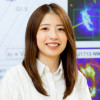
Particle acceleration in young supernova remnants with X-ray and gamma-ray observations
January 9 (Thu) at 10:00 - 11:00, 2020
Naomi Tsuji
A supernova remnant (SNR) is a prominent candidate as an accelerator of galactic cosmic rays. In a widely accepted theory of diffusive shock acceleration, a particle is accelerated by diffusing back and forth across shock waves. The spectral cutoff shape of accelerated electrons is determined by diffusion and cooling and appears in the X-ray and TeV gamma-ray energy ranges, respectively, through synchrotron radiation and inverse Compton scattering. To measure the cutoff shape precisely and explore the corresponding diffusion coefficient and acceleration efficiency, we systematically analyze young SNRs that emit nonthermal X-rays and TeV gamma-rays. We found a variety of particle acceleration depending on individual SNRs: the cutoff energy is well-reproduced by the theoretical prediction in Kepler’s SNR and Tycho’s SNR, while it might be affected by the surroundings in Cassiopeia A and SN 1006. Putting all the eleven SNRs analyzed in this study together, the acceleration tends to be more efficient as the SNR evolves and becomes older, which implies a connection with turbulent production.
Venue: Seminar Room #160
Event Official Language: English
115 events in 2020
Events
Categories
series
- iTHEMS Colloquium
- MACS Colloquium
- iTHEMS Seminar
- iTHEMS Math Seminar
- DMWG Seminar
- iTHEMS Biology Seminar
- iTHEMS Theoretical Physics Seminar
- Information Theory SG Seminar
- Quantum Matter Seminar
- ABBL-iTHEMS Joint Astro Seminar
- Math-Phys Seminar
- Quantum Gravity Gatherings
- RIKEN Quantum Seminar
- Quantum Computation SG Seminar
- Asymptotics in Astrophysics SG Seminar
- GW-EOS WG Seminar
- DEEP-IN Seminar
- NEW WG Seminar
- Lab-Theory Standing Talks
- QFT-core Seminar
- STAMP Seminar
- QuCoIn Seminar
- Number Theory Seminar
- Academic-Industrial Innovation Lecture
- Berkeley-iTHEMS Seminar
- iTHEMS-RNC Meson Science Lab. Joint Seminar
- RIKEN Quantum Lecture
- Theory of Operator Algebras
- iTHEMS Intensive Course-Evolution of Cooperation
- Introduction to Public-Key Cryptography
- Knot Theory
- iTHES Theoretical Science Colloquium
- SUURI-COOL Seminar
- iTHES Seminar
